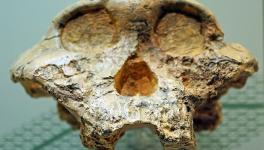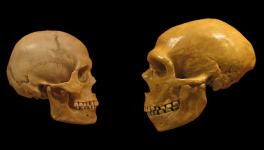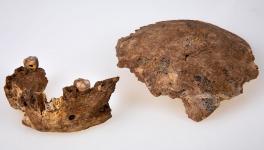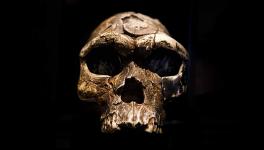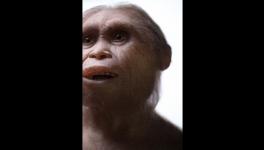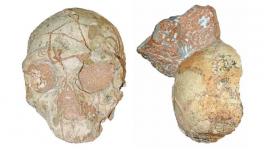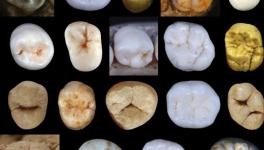Genetic Variations in Neanderthals can Explain Human Brain Evolution
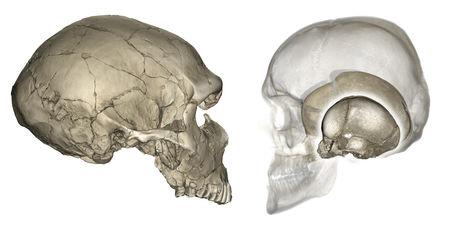
Image Courtesy: Science Magazine
It was way back in the 1860s that scientists first discovered the shape of the skull of the Neanderthal, a close cousin of the modern humans and ever since then, they have been struck by its strange shape—an elongated one. The modern humans have an unusually round skull and brain, in contrast to the elongated shape of the other human species. This round structure is referred as the globular brain structure.
But scientists have found out some clue behind the differences in the shapes of modern human brains and that of Neanderthals. This clue, according to their findings, lies in the variation of the genetic architecture between the two species. They also claim to have deciphered the underlying evolutionary processes in the changes of brain shapes.
The international research team led by Philipp Gunz, a paleoanthropologist from the Max Planck Institute for Evolutionary Anthropology and geneticist Simon Fisher from the Max Planck Institute for Psycholinguistics came out with an ingenious idea to investigate the long hunted question. They published their research in Current Biology last week. The team combined fossil skulls, ancient genome sequence data and brain imaging.
The researchers took advantage of the fact that living humans in Europe carry rare fragments of Neanderthals in their genome. The trace presence of Neanderthal genes in some of the modern European populations is a result of interbreeding between the two species in archaic times. Different people carry different gene fragments and are also scattered throughout the genome.
Also Read | Prehistoric Cave Woman Was An Offspring Of Two Different Species Of Archaic Humans
The researchers first used the CT scans of fossilised Neanderthal skulls and that of modern human skulls. This was done to make the endocasts—the virtual imprints of the braincase interior. Then, the scientists determined the degree of globularity—the round shape of the brain, among thousands of healthy humans with the help of MRI. Despite clear distinctions between the modern human skull and brain and that of the Neanderthals, the scientists also found that considerable differences in globularity among participants exist. Finally, they studied the genomes of around 4,500 participants to find out traces of Neanderthal genes they carry. The main point was to search whether any of the trace Neanderthal genes can influence brain globularity in the living human samples.
The team found that Neanderthal genes present in the modern humans can influence the brain shapes. Especially, Neanderthal DNA fragments that have two genes—UBR4 and PHLPP1 in the chromosomes 1 and 18 render the brain to be less globular in shape. These genes are also known for their roles in different aspects of brain development like neurogenesis and myelination. The strongest evidence of these Neanderthal genes has been found in the brain areas called putamen and cerebellum. These areas are also involved in complex brain activities like learning, coordination of movements, memory etc. “The potential for links between evolutionary changes in brain globularity and mechanisms affecting the basal ganglia and cerebellum is intriguing”, said Gunz, the lead scientist.
“The effects of carrying these rare Neandertal DNA fragments are really subtle, but detectable due to the large sample size”, explained Fisher, adding, “this is only our first glimpse of the molecular underpinnings of globularity. Like other aspects of brain structure, globularity is a trait that is likely to be influenced by the combined effects of many different genetic variants.”
The soft tissues in the brain are almost impossible to extract from the fossils. Combining Neanderthal DNA present in modern humans to the brain scans is an innovative way to find out the molecular underpinnings of the evolution of brain shapes and has the potential to further decipher the evolution of brain functions.
Also Watch | Dmanisi Discoveries Suggest Simpler Human Lineage
Get the latest reports & analysis with people's perspective on Protests, movements & deep analytical videos, discussions of the current affairs in your Telegram app. Subscribe to NewsClick's Telegram channel & get Real-Time updates on stories, as they get published on our website.









